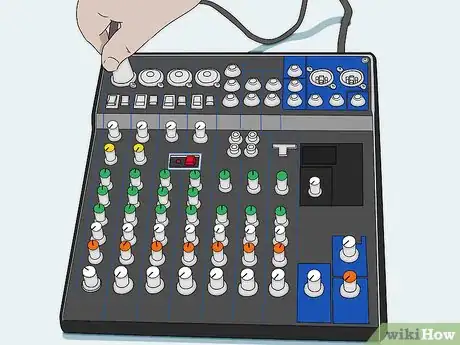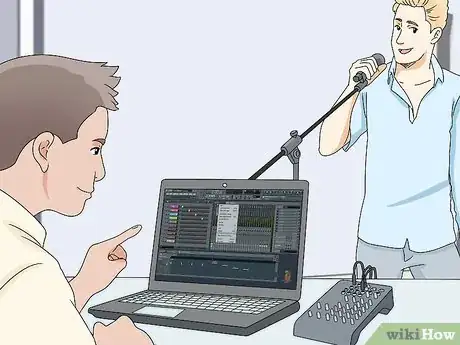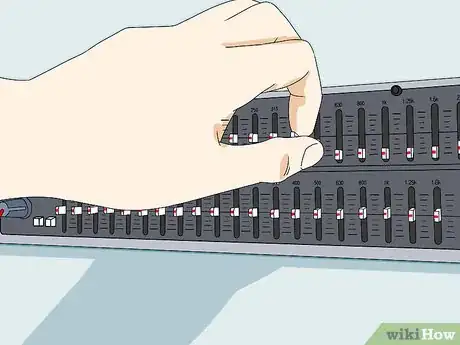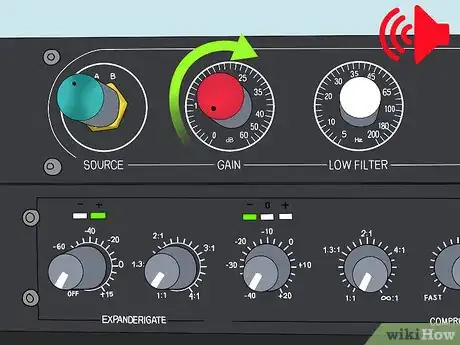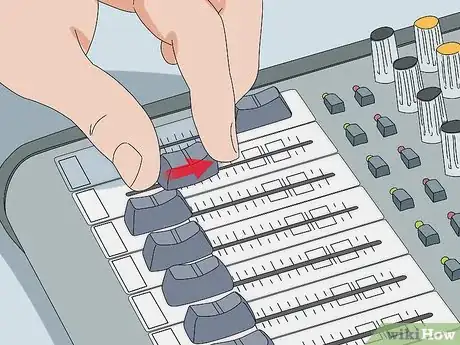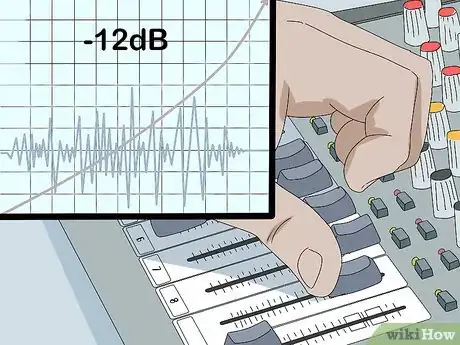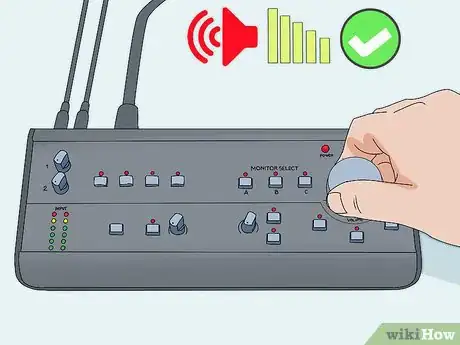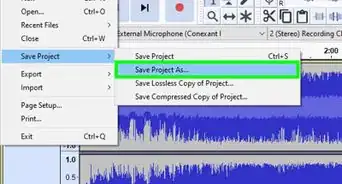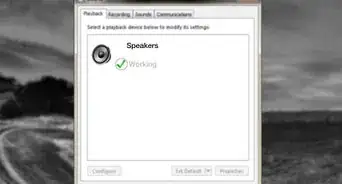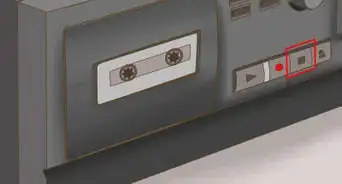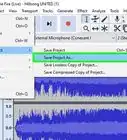X
wikiHow is a “wiki,” similar to Wikipedia, which means that many of our articles are co-written by multiple authors. To create this article, volunteer authors worked to edit and improve it over time.
This article has been viewed 70,010 times.
Learn more...
A lot of debate rages around the best way to equalize (or “EQ”) a room, but all agree that although you can’t change the structure of the room, you can change the way the speaker system responds to that space. When you EQ a room, the goal is for the speaker system to produce the same signal that’s put into it. There are many methods to equalize the sound in a room. This article discusses the feedback method for equalizing a performance space.
Steps
-
1Place a dynamic microphone with a cardioid pattern at the center of the stage and point it toward where a person would speak or perform.
-
2Ask anyone making noise on the stage to leave so they don’t corrupt the EQ process.Advertisement
-
3Set all of the microphone’s EQ channels on the mixing board to flat.
-
4Bypass the compressor-limiters, feedback destroyers and other similar processors so you get a clean signal.
-
5Move the microphone and instrument channels in the monitor(s) to about where they need to be for the performance.
-
6Adjust the Main House EQ so it’s set to the Center position.
-
7Turn the mixer’s Input Gain to “Off” and the channel fader to 0dB or -10dB. The fader setting on the Main Out needs to be at -10 or 0dB.
-
8Raise the Input Gain slowly until you hear a ringing noise from the speaker system. Turn it down until the sound stops.
-
9Manipulate the channel fader to cause the speaker system to ring at a low, nearly steady tone.
- A real-time analyzer will show you which frequency is ringing, but it isn’t the most accurate reading. If you have a multimeter with frequency, plug it into the Headset Out and use the Pre-Fade Listen (PFL) Output as a signal. The better reading you get, the more accurate your adjustments when you want to properly EQ a room.
-
10Decrease the ringing by -3dB on its frequency, which should eliminate the ringing sound.
-
11Raise the fader once the ringing stops.
-
12Repeat these steps for each slider until several of the frequencies rise at once or until one of the frequencies hits -12dB.
- If you hit the EQ’s bottom before this happens, there’s a problem with the room itself or with the system design.
-
13Turn the master monitor volume back to your preferred level for the performance.
-
14Ask someone to stand at the microphone(s) and instrument(s) and check them so you can adjust the levels of each individual input.
Advertisement
References
About This Article
Advertisement


